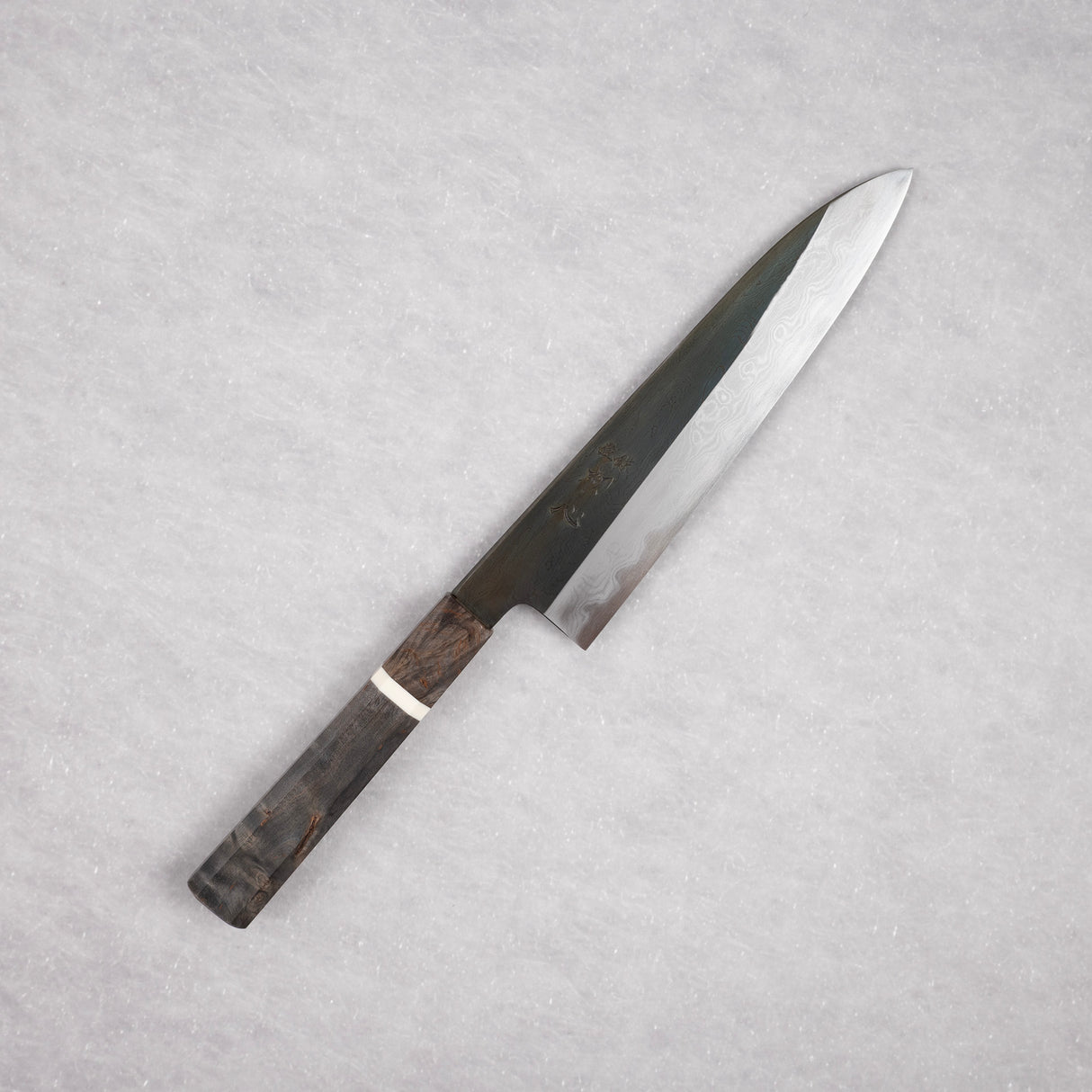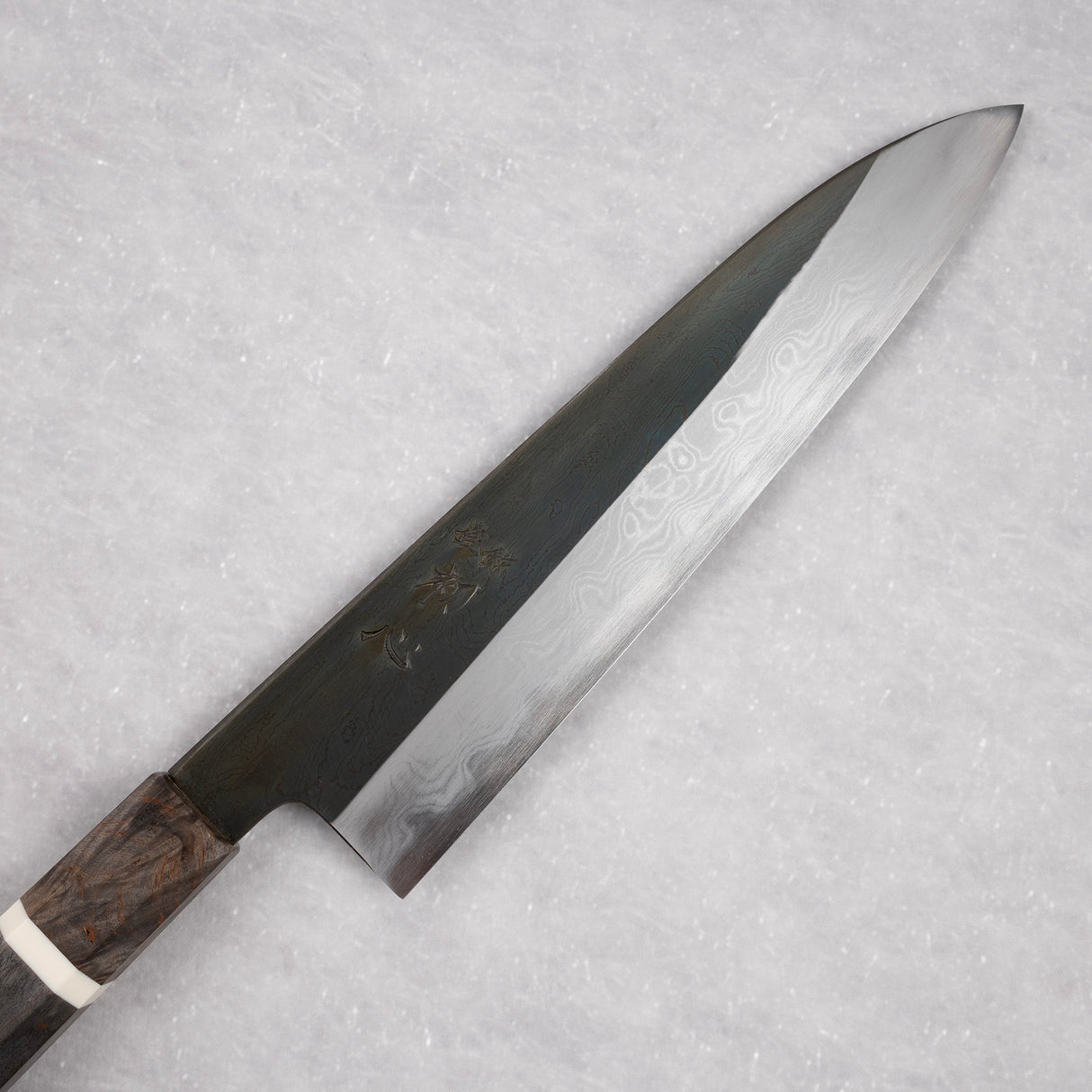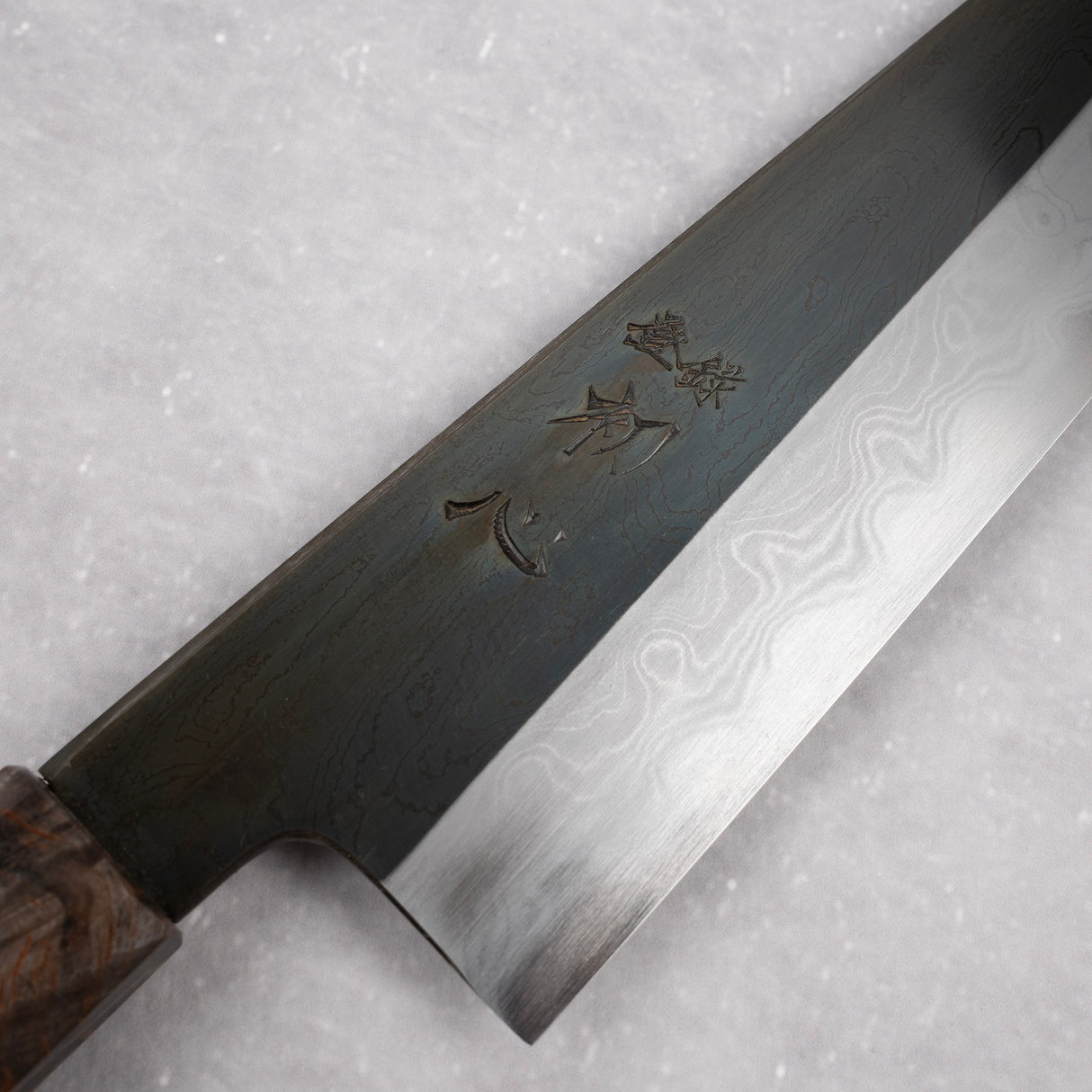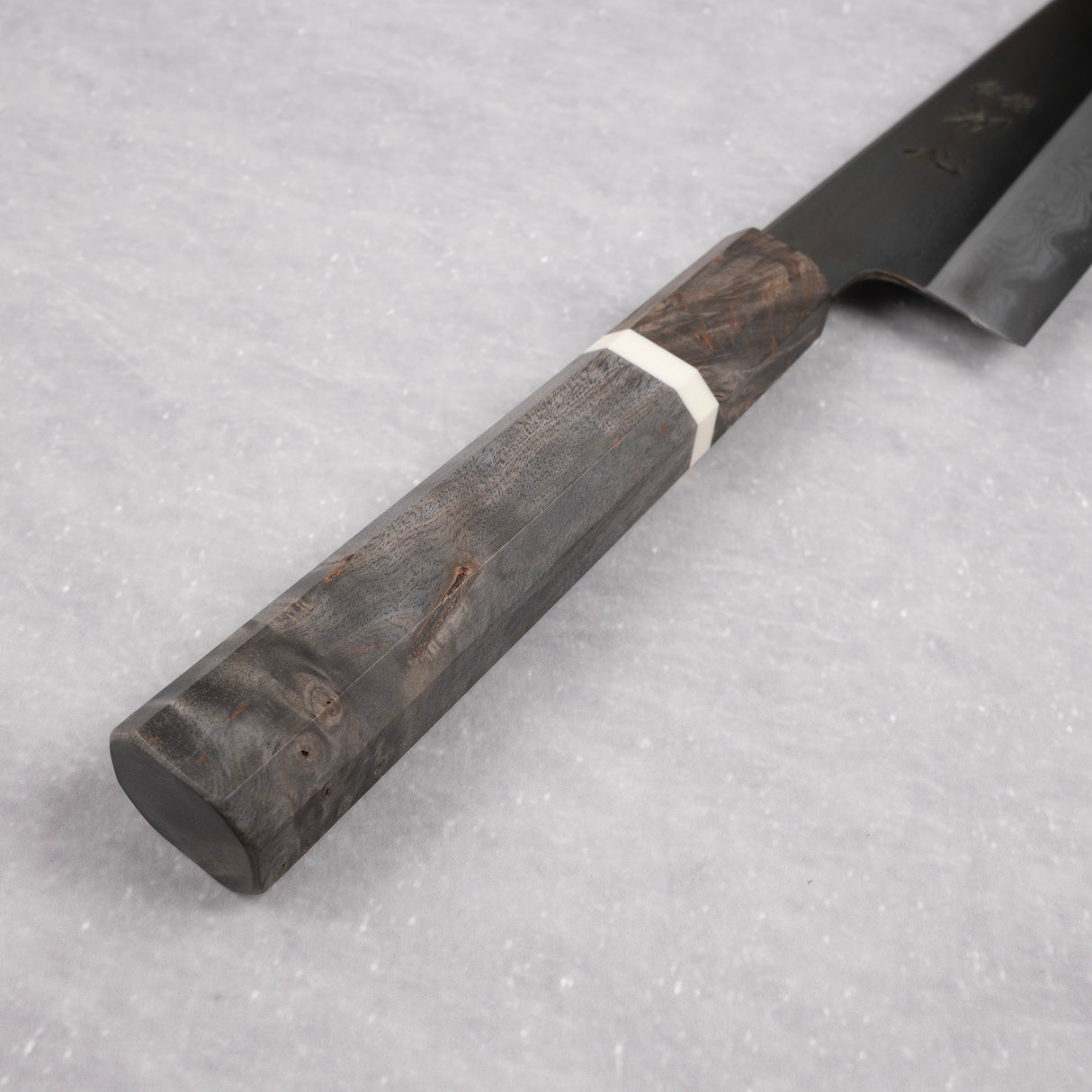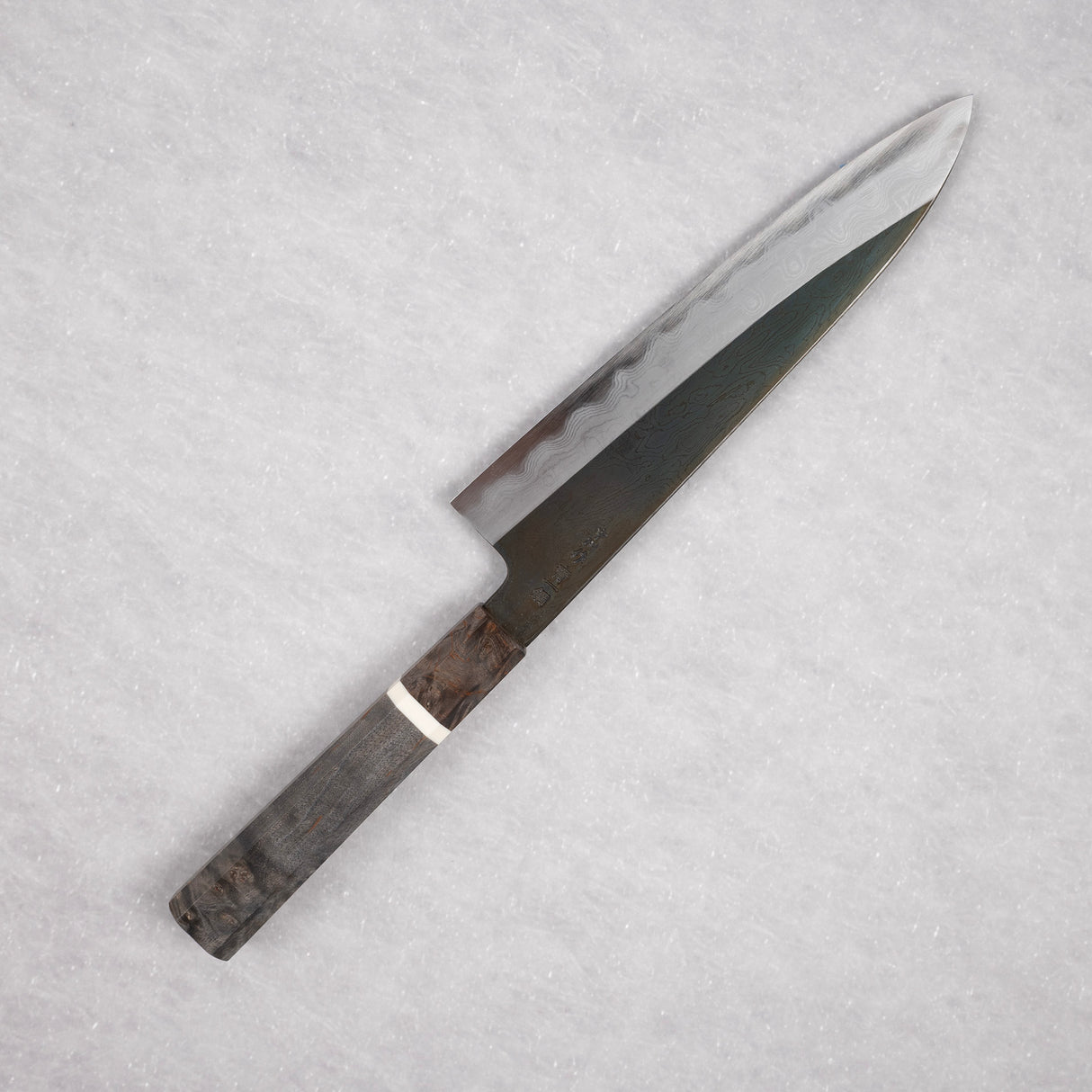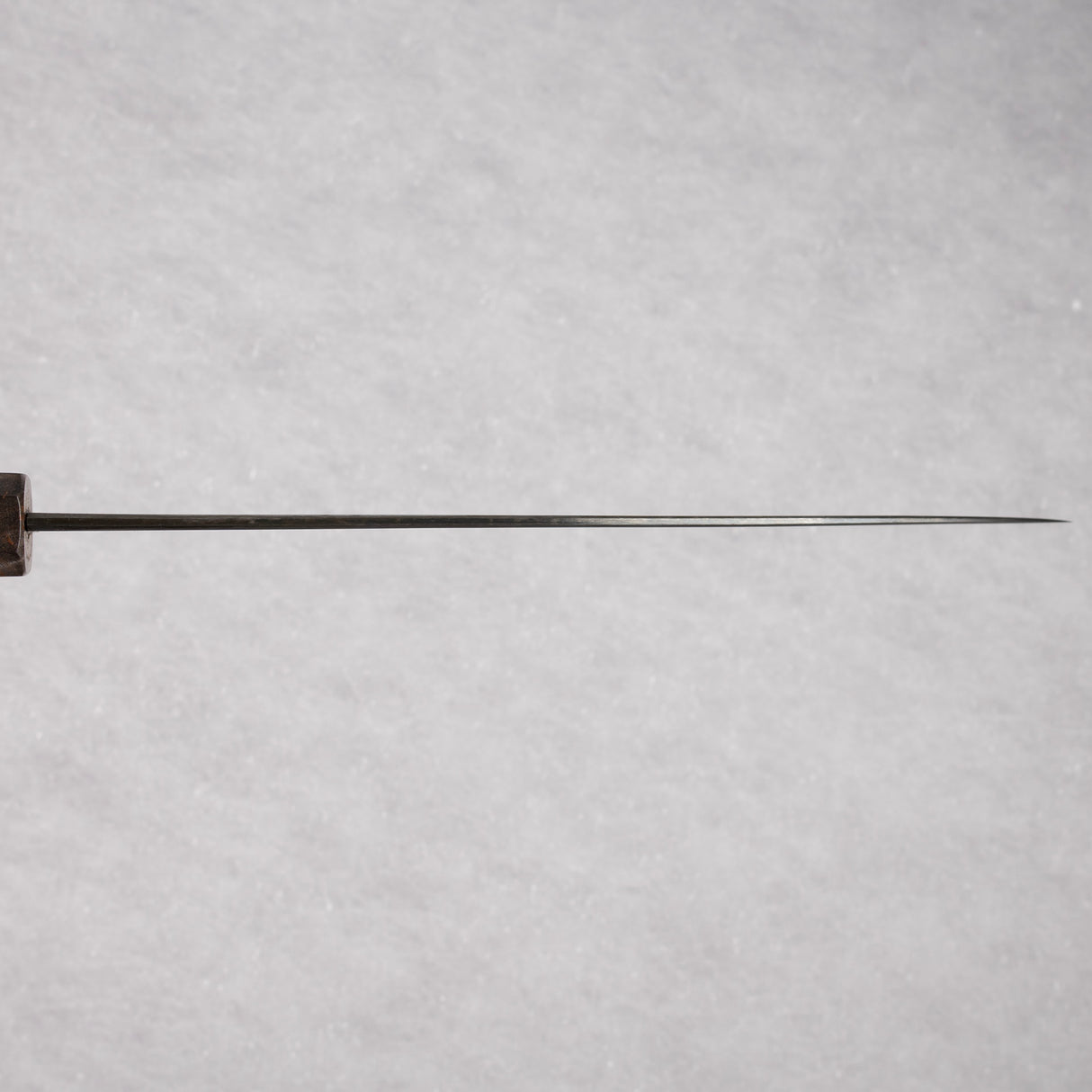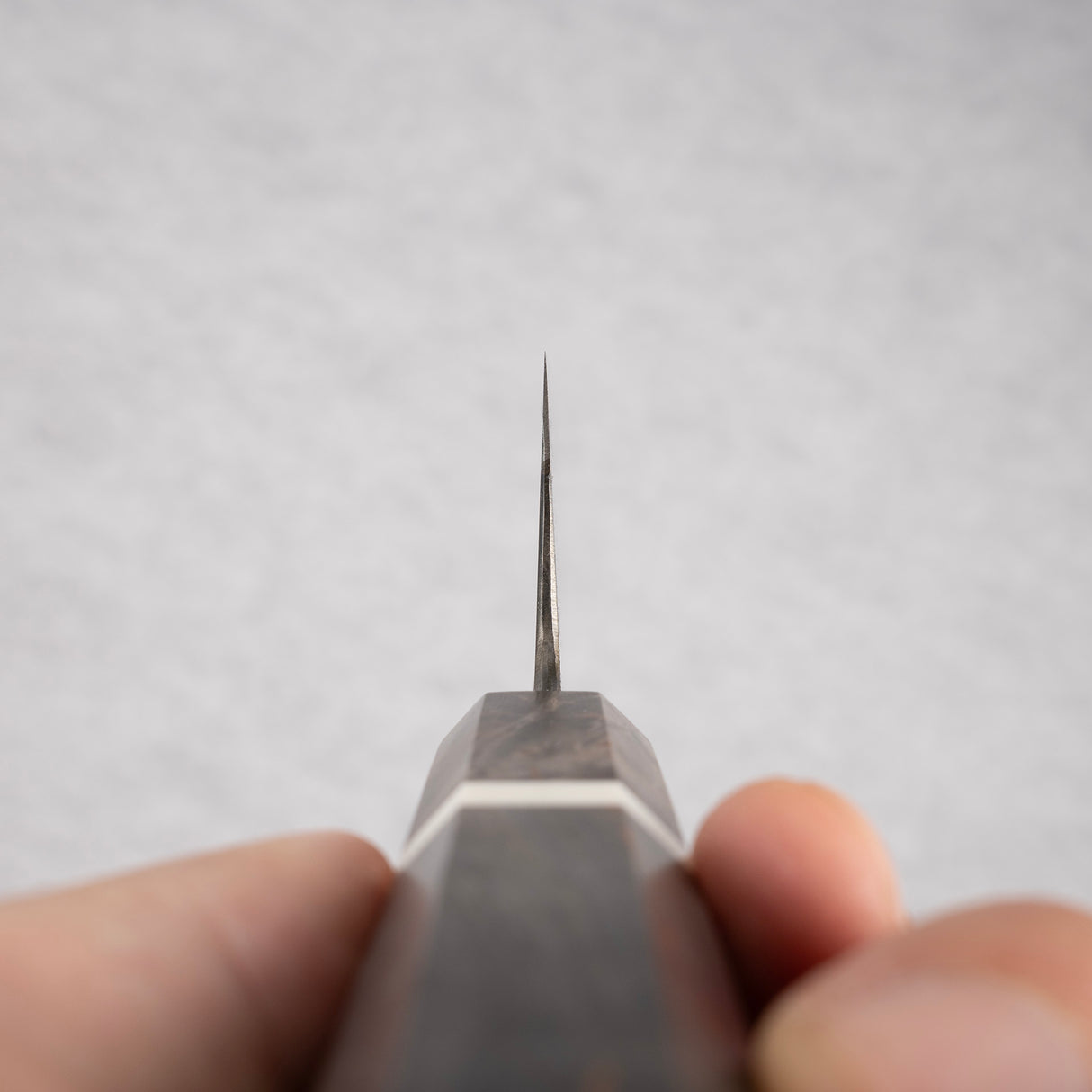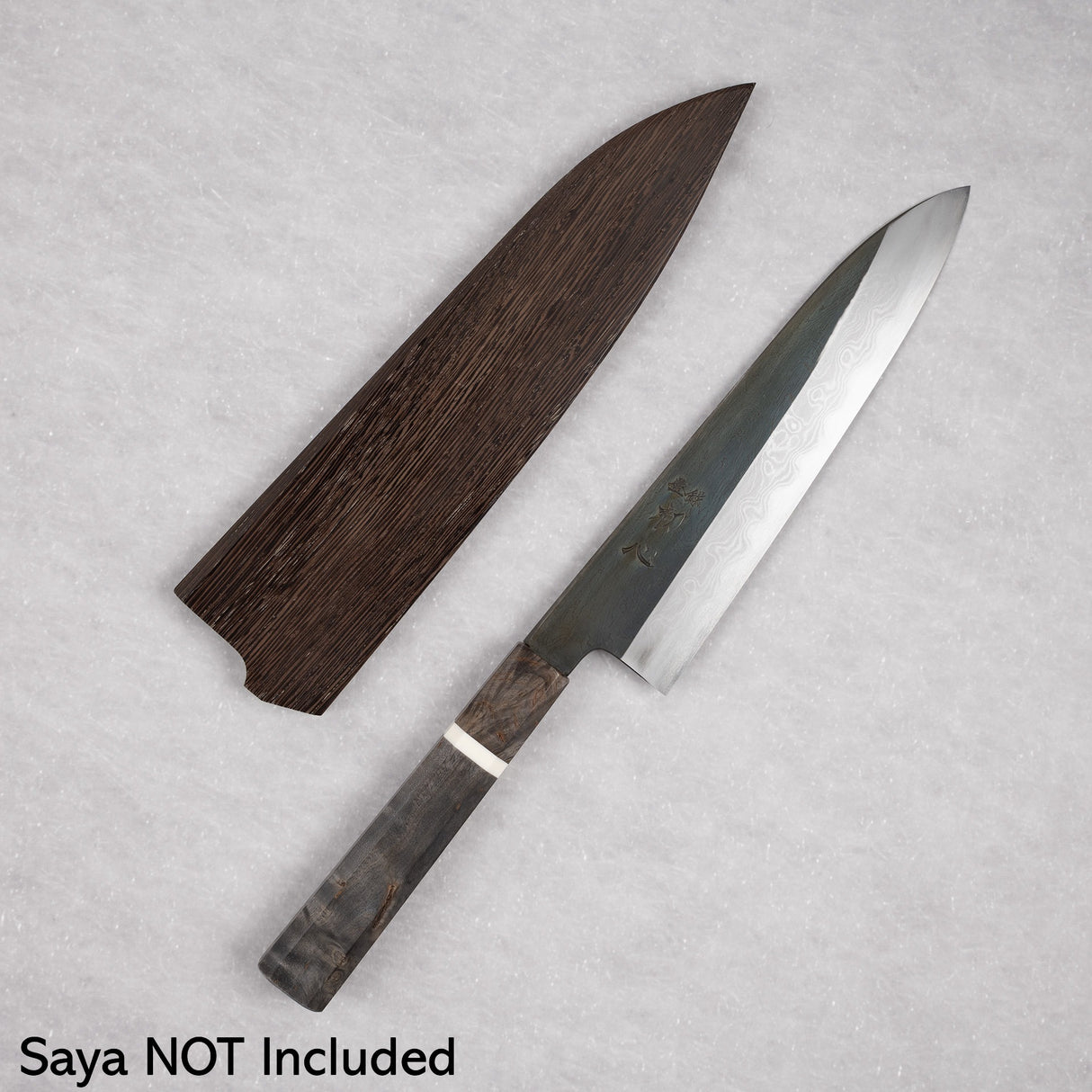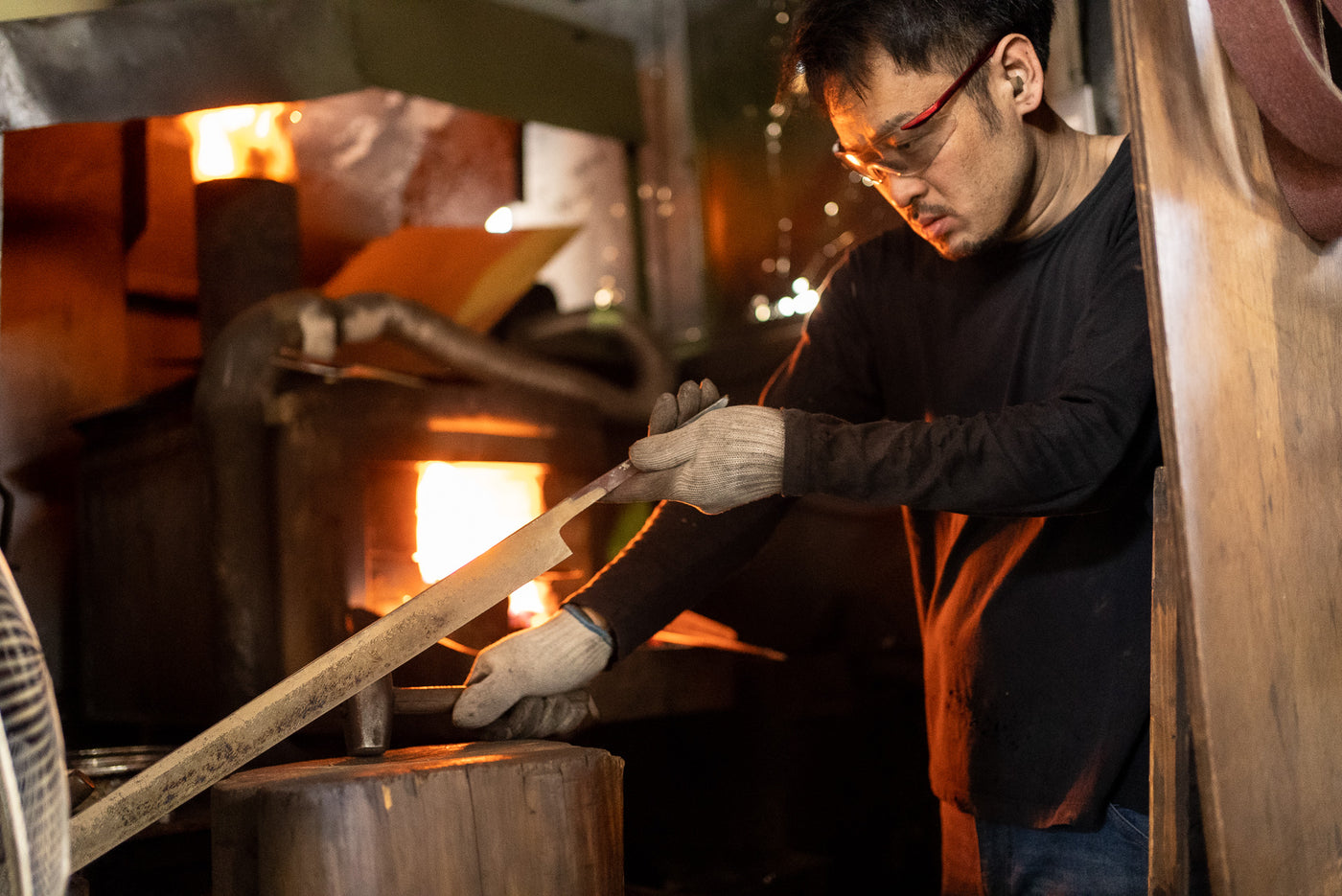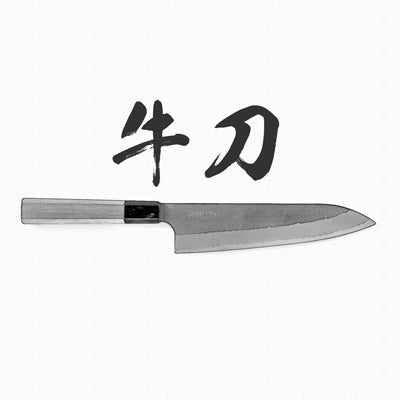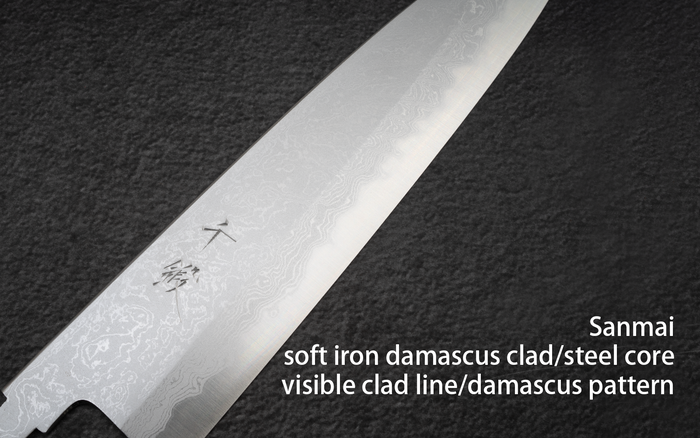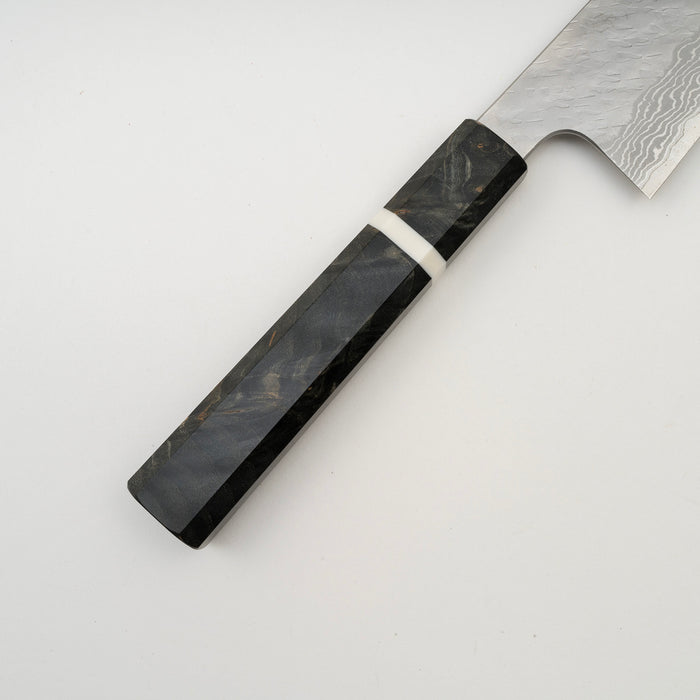Nakagawa Hamono | 庫存單位:
NAKA_B1EBDA_GY210_BR
初心 x 中川聰 藍色 1 蝕刻黑大馬士革牛刀 210 毫米
售價
$9,509.00
正常價格
$13,137.00
單價
/
不可用
初心 x 中川聰 藍色 1 蝕刻黑大馬士革牛刀 210 毫米 已缺貨,一旦有貨就會出貨。
無法載入取貨日期
Detailed Specifications
| Line | 中川青一大馬士革蝕黑寬刃 |
| Profile | 牛刀 / 主廚刀 |
| Bevel Type | 雙斜面 |
| Weight | 138 g | 4.9 oz |
| Edge Length | 200 mm | 7 7/8″ |
| Heel Height | 48 mm | 1 57/64″ |
| Width @ Spine | 2.8 mm | 7/64″ |
| Width @ Mid | 2.1 mm | 5/64″ |
| Width @ 1cm from Tip | 0.9 mm | 1/32″ |
| Steel | 青紙一號 / 青紙 #1 | 碳鋼 |
| Blade Construction | Sanami - 軟鐵大馬士革夾層 |
| Hardness (HRC) | 61 - 64 |
| Surface Finish | 蝕刻 |
| Handle | 八角樺木瘤加間隔飾片 |
| Region | 堺 |
| Best for |
|

| Pros | Cons |
|
|
|
Care Instruction
- Don't cut hard things! Japanese knives are brittle so bone hacking is a NO NO!
- Wash with neutral detergent after use, and wipe dry;
- Please don't wash knife with dishwasher, it will damage the wood handle;
- Be careful not to leave the knife close to a heat source for a long time;
- It is a lot more dangerous to cut with a blunt knife than a sharp knife!
- It is best to sharpen a Japanese knife regularly on a waterstone. Error: Steel nature unknown

